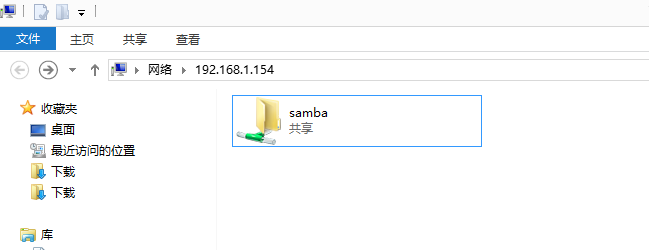centos安装samba
centos安装samba
1、查看当前版本:
$ rpm -qa | grep samba
2、卸载
$ yum remove -y samba
3、安装
$ yum install -y samba
4、创建一个共享目录/home/samba:
$ cd /home
$ mkdir samba
5、创建一个samba登陆用户:
$ useradd samba //为系统创建一个samba $ passwd samba //为用户设置一个密码
6、创建一个samba用户:
$ smbpasswd -a samba //创建samba客户端用户
7、配置samba:
$ cd /etc/samba
$ ls
$ cp smb.conf smb.conf.back
$ vim smb.conf
修改用户组,看你的电脑上是什么用户组:
[global] # ----------------------- Network Related Options ------------------------- # # workgroup = NT-Domain-Name or Workgroup-Name, eg: MIDEARTH # # server string is the equivalent of the NT Description field # # netbios name can be used to specify a server name not tied to the hostname # # Interfaces lets you configure Samba to use multiple interfaces # If you have multiple network interfaces then you can list the ones # you want to listen on (never omit localhost) # # Hosts Allow/Hosts Deny lets you restrict who can connect, and you can # specifiy it as a per share option as well # workgroup = WORKGROUP server string = Samba Server Version %v ; netbios name = MYSERVER ; interfaces = lo eth0 192.168.12.2/24 192.168.13.2/24 ; hosts allow = 127. 192.168.12. 192.168.13.
然后,在最后一行添加:
[samba] comment = samba path = /home/samba public = yes writable = yes valid users = samba
8、配置生效,重启samba服务:
chkconfig smb on
chkconfig nmb on
service smb start
service nmb start
9、配置防火墙开放端口:
$ cd /etc/sysconfig
$ ls
$ vim iptables
在最后一行添加:
-I INPUT -p tcp --dport 137 -j ACCEPT -I INPUT -p udp --dport 137 -j ACCEPT -I INPUT -p tcp --dport 138 -j ACCEPT -I INPUT -p udp --dport 138 -j ACCEPT -I INPUT -p tcp --dport 139 -j ACCEPT -I INPUT -p udp --dport 139 -j ACCEPT -I INPUT -p tcp --dport 445 -j ACCEPT -I INPUT -p udp --dport 445 -j ACCEPT
重启防火墙:
$ service iptables restart
10、连接测试:
在你的电脑上 开始->运行 输入你的服务器ip地址:

等待一会:
输入你的samba账号密码:

然后可以直接拖到你的sublime直接可以编辑保存!
如果windows下登录samba服务器后无法访问linux下共享目录,提示没有权限
1、确保linux下防火墙关闭或者是开放共享目录权限
2、确保samba服务器配置文件smb.conf设置没有问题,可网上查阅资料看配置办法
3、确保setlinux关闭,可以用setenforce 0命令执行。 默认的,SELinux禁止网络上对Samba服务器上的共享目录进行写操作,即使你在smb.conf中允许了这项操作。
# setenforce 0
/usr/bin/setenforce 修改SELinux的实时运行模式
setenforce 1 设置SELinux 成为enforcing模式
setenforce 0 设置SELinux 成为permissive模式
如果要彻底禁用SELinux 需要在/etc/sysconfig/selinux中设置参数selinux=0 ,或者在/etc/grub.conf中添加这个参数
/usr/bin/setstatus -v


